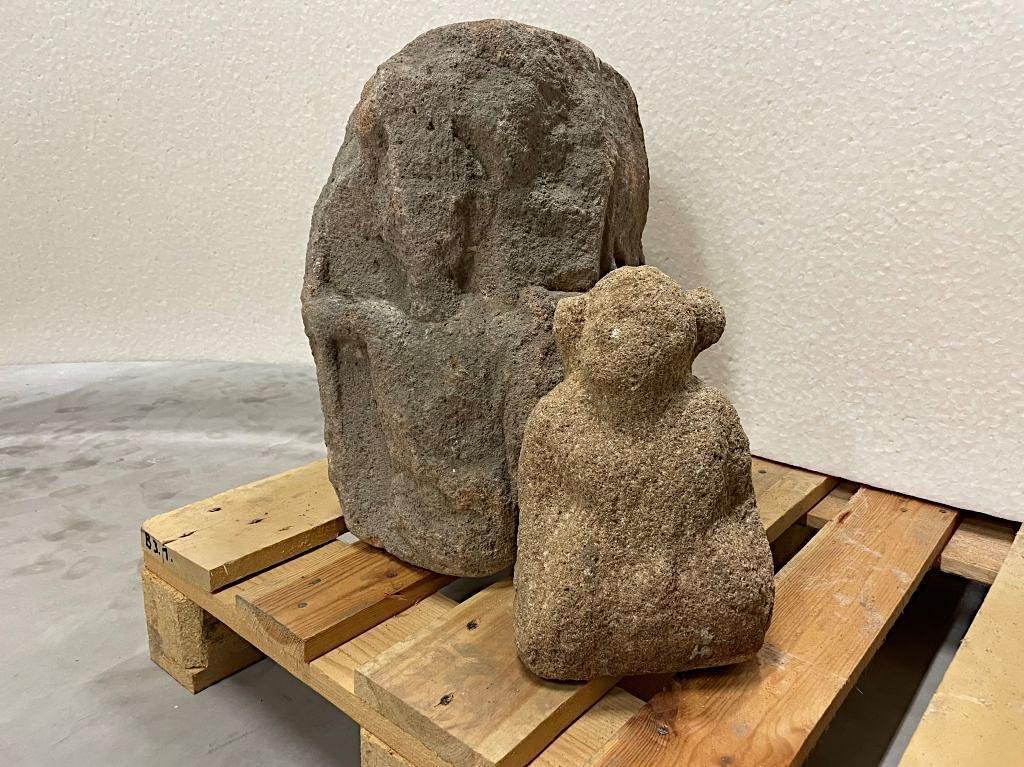During excavations at the Roman fortress in Stuttgart’s Bad Cannstatt area, archaeologists unearthed a stone statue depicting a Roman deity.
 The newly found sculpture of the giant together with the stone of the four gods discovered in 1908. Both stones were part of a giant Roman column of Jupiter. Credit: Landesmuseum Württemberg Stuttgart / A. Fendt
The newly found sculpture of the giant together with the stone of the four gods discovered in 1908. Both stones were part of a giant Roman column of Jupiter. Credit: Landesmuseum Württemberg Stuttgart / A. Fendt
The ongoing excavations, overseen by experts from the State Office for Monument Preservation (LAD) of the Stuttgart Regional Council, have been focused on the site of the Altenburg School expansion. This location, dating back to the Roman period between 100 and 260 AD, once housed a cavalry fort and later a bustling civilian settlement.
The artifact, discovered by archaeologists from ArchaeoBW in collaboration with the LAD, is a 30-centimeter-tall statue crafted from sandstone. Initially, the statue appeared unremarkable, covered in mud, but upon closer inspection and cleaning, it revealed a kneeling figure with a human head. Intriguingly, the lower portion of the body morphs into a serpent-like form, suggesting a fusion of Roman and Germanic mythologies.
Dr. Andreas Thiel, the chief archaeologist of LAD, elucidated that the statue represents a hybrid creature known as a ‘Giant’ in Roman-Germanic mythology. These figures were often part of Jupiter-Giant columns, monumental structures that combined elements of classical Roman deities with Germanic beliefs. Typically, such columns featured Jupiter wielding a thunderbolt atop a horse, with a crouching figure underneath, symbolizing the god’s dominion over natural forces.
Dr. Astrid Fendt, head of the Archaeology Department at the State Museum of Württemberg, highlighted the connection between this find and artifacts discovered over a century ago. She referenced a fragment stored in the museum’s depot, likely part of a Jupiter-Giant column’s base, featuring depictions of Roman gods Mercury, Juno, Hercules, and Minerva. This alignment with past findings allows for the reconstruction of a Jupiter-Giant column that once adorned an important intersection in Roman Bad Cannstatt.
The State Museum of Württemberg hailed the discovery as “another piece of the rich Roman past of Stuttgart,” emphasizing its role in augmenting our understanding of the city’s history. Moreover, representatives of the museum expressed their appreciation for the fortuitous connection between the recently discovered statue and fragments preserved in their collection, which has aided in the reconstruction of an important historical monument.
The Regional Council of Stuttgart described the find as a “great stroke of luck,” emphasizing its contribution to piecing together the puzzle of Stuttgart’s past.





